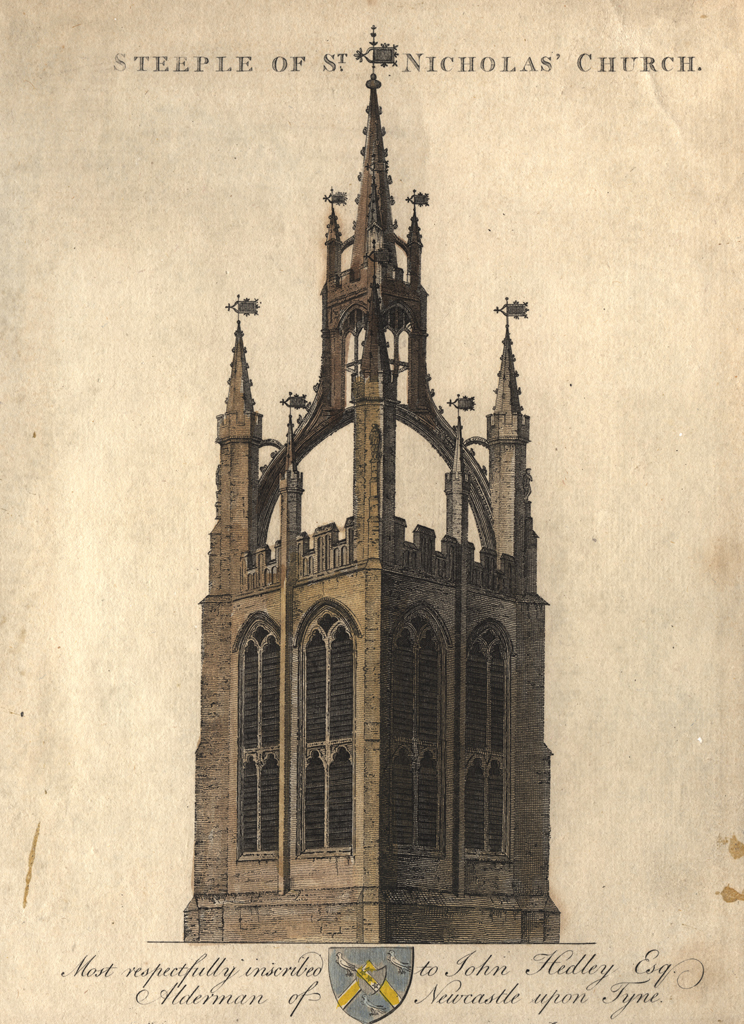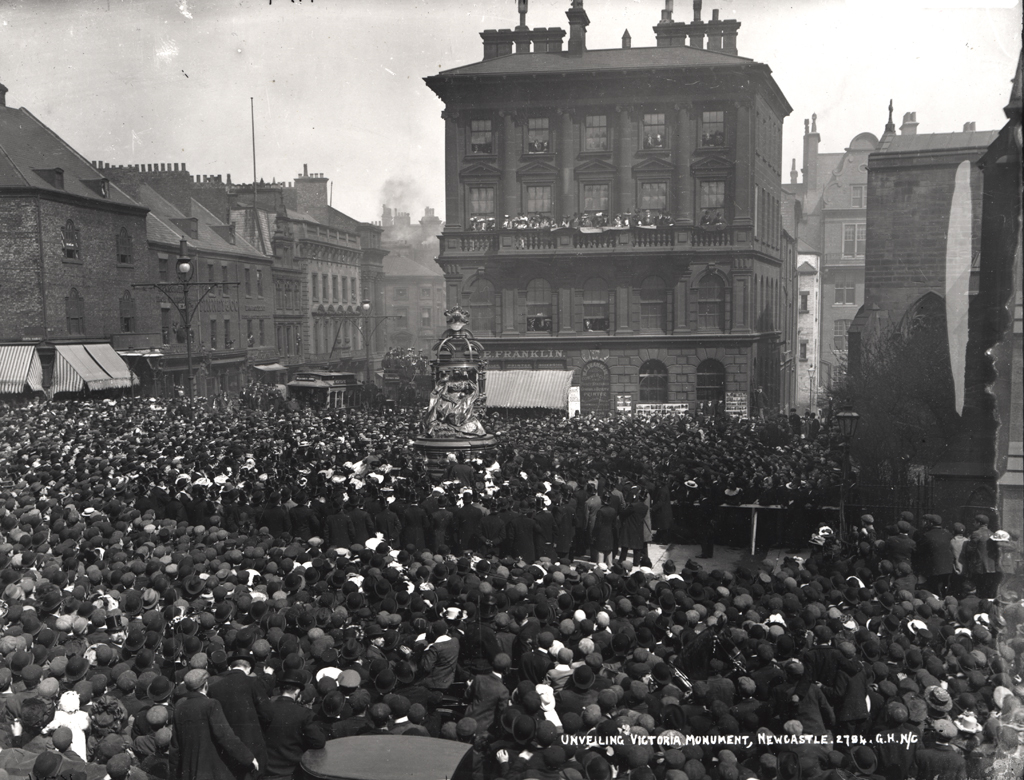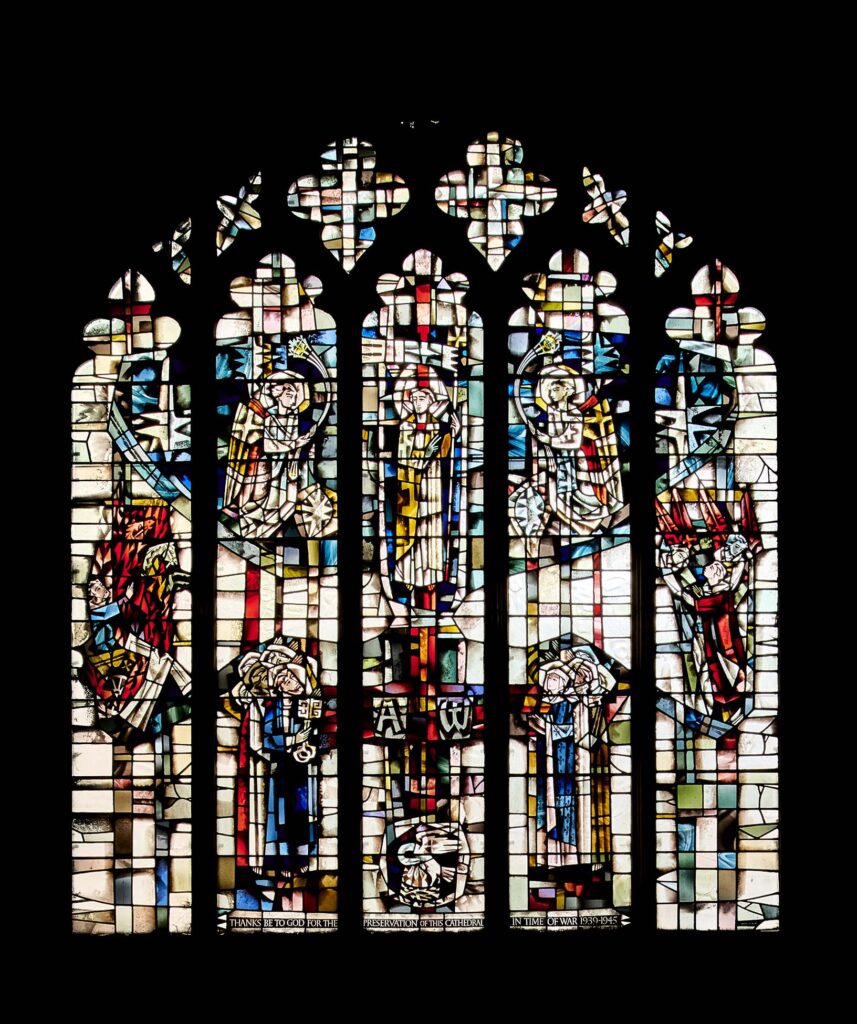April & May 2024 – Before planning your visit, please check our ‘Visitor Notices’ for accessibility updates and one-off changes to opening times. Click here to view.
NEWCASTLE CATHEDRAL
A BEACON OF LIGHT
Timeline of the Cathedral
For over 900 years, Newcastle Cathedral – originally the Parish Church of St Nicholas – has been at the pulsing heart of Newcastle, as a place of worship and community. From its creation, rebuilding in the Medieval era and the drama of the English Civil War to the extensive remodeling across centuries, the Cathedral echoes stories and history from every corner.

Medieval
c.1180 – Likely foundation of St Nicholas’ Church, possibly first timber, then stone. Legend has it that it was destroyed by fire more than once.
1275 – A larger stone church is built on the site of St Nicholas involving many skilled craftsmen with work being completed in 1359 almost a century after it began!
1400s – Philanthropists Robert and Alice Rhodes pay for the Lantern Tower to be constructed in 1448. They also commission the font, which is adorned with their heraldic family crest.
Philanthropist and Mayor of Newcastle, Roger Thornton pays for the east window some time before his death in 1430.
Image courtesy of Newcastle Libraries – The Lantern Tower c.1776
Early Modern
1553 – Newcastle tries to become a city and divide itself from the Diocese of Durham, creating a Bishopric of Newcastle with St. Nicholas’ Church at its heart. However, Queen Mary Tudor, upon her accession decided to stop this effort.
1640 – Cuthbert Maxwell dismantles and hides the font from Scottish marauders.
1644, Siege of Newcastle – During the Civil Wars the city was besieged by the Scottish army. The Mayor of Newcastle imprisons Scottish soldiers in the Lantern Tower to prevent its destruction.
Image courtesy of Northumberland Archives – Artwork depicting the Scots in the Tower, 1644 by Ralph Hedley


Georgian Newcastle
1741 – The Thomlinson Library opens as an extension to the Cathedral.
1805 – Admiral Lord Collingwood saves the day at the Battle of Trafalgar. He was both married and baptised in the Cathedral.
Left image courtesy of Tim Pickford-Jones – The Lord Admiral Collingwood Memorial in the Cathedral
Right image courtesy of Laing Art Gallery – Painting of Thomas Bewick
Victorian Newcastle
1865 – Architect Sir Gilbert Scott is engaged to underpin the leaning tower and rebuild the crown after it had begun to lean as a result of building work close to the building.
1882 – St Nicholas’ is designated the Cathedral Church for the new Diocese of Newcastle. The quire is remodeled.
Image courtesy of Newcastle Libraries – Newcastle Cathedral c.1890


Early Twentieth Century
Tyneside’s industries of coal, iron and shipbuilding – which were prominent in the 1900s and first half of the Twentieth Century – are represented in the windows dedicated to North East industrialists in St George’s Chapel.
1903 – The bronze statue of Queen Victoria is erected in St Nicholas’ Square, in front of the Cathedral, in commemoration of her death and reign which came to an end in 1901.
1926 – The Cathedral’s Hall is added which, today, houses Café 16, ran by the Oswin Project.
Image courtesy of Newcastle Libraries – Crowds gather to witness the unveiling of Queen Victoria’s commemorative statue, 1903
First World War
There are first world war memorials across the Cathedral that commemorate battalions. Most notably, one of the stained glass windows in the north aisle of the Cathedral, commemorates the Northumberland Fusiliers who perished during the Great War.
1918 – The Cathedral bell rings out for Armistice Day at the end of World War One. The colours of the Northumberland Fusiliers are hung in commemoration. The Cathedral is the only Cathedral in England to ring a full peal (a nonstop sequence of over 5,000 changes, that normally lasts around 3 hours).
Image courtesy of Northumberland Archives – American and British flags are hung in the Quire to celebrate the Americans entry to the first world war, 1917


Second World War
1939 – The Second World War begins. The Cathedral takes precautions by protecting the font…
1940 – The Danish Merchant Navy, some 6,000 sailors and seamen, were ordered by the Danish government not to return to their home ports. In the Summer of 1940, Newcastle was named the ‘home of the Danish sailors.’ There was a club created for them which was situated on the road across from the Cathedral.
Images courtesy of Northumberland Archives – Left image depicts the precautions for the font & the right image shows the last Christmas tree in the Cathedral, both taken 1939
Image courtesy of Jigsaw Design & Publishing – Leonard Evetts’ Ascension Chapel window
1941 – An air raid causes blast damage to the Cathedral. Although not a direct hit, the window above the ascension chapel is damaged and boarded up.
1942 – The Cathedrals’ bells ring out in celebration of the allied victory at El Alamein.
1945 – The Second World War ends. Newcastle had suffered badly against the air raids. Many of the Danish Seamen who left Newcastle’s port never returned with over 1,500 being recorded as killed. The Proclamation of the end of the war in Europe is read by the Lord Mayor in St. Nicholas’ Square.
1962 – Leonard Evetts’ Ascension Window commemorates World War Two.


Twenty first Century
2002 – The Danish Memorial Window is created by Mike Davies.
2019 – The Cathedral receives National Heritage Lottery Funding for the ‘Common Ground in Sacred Space’ project.
2021 – The Nave and churchyards are extensively remodeled.
Image courtesy of Jigsaw Design & Publishing – The Nave post project conservation
